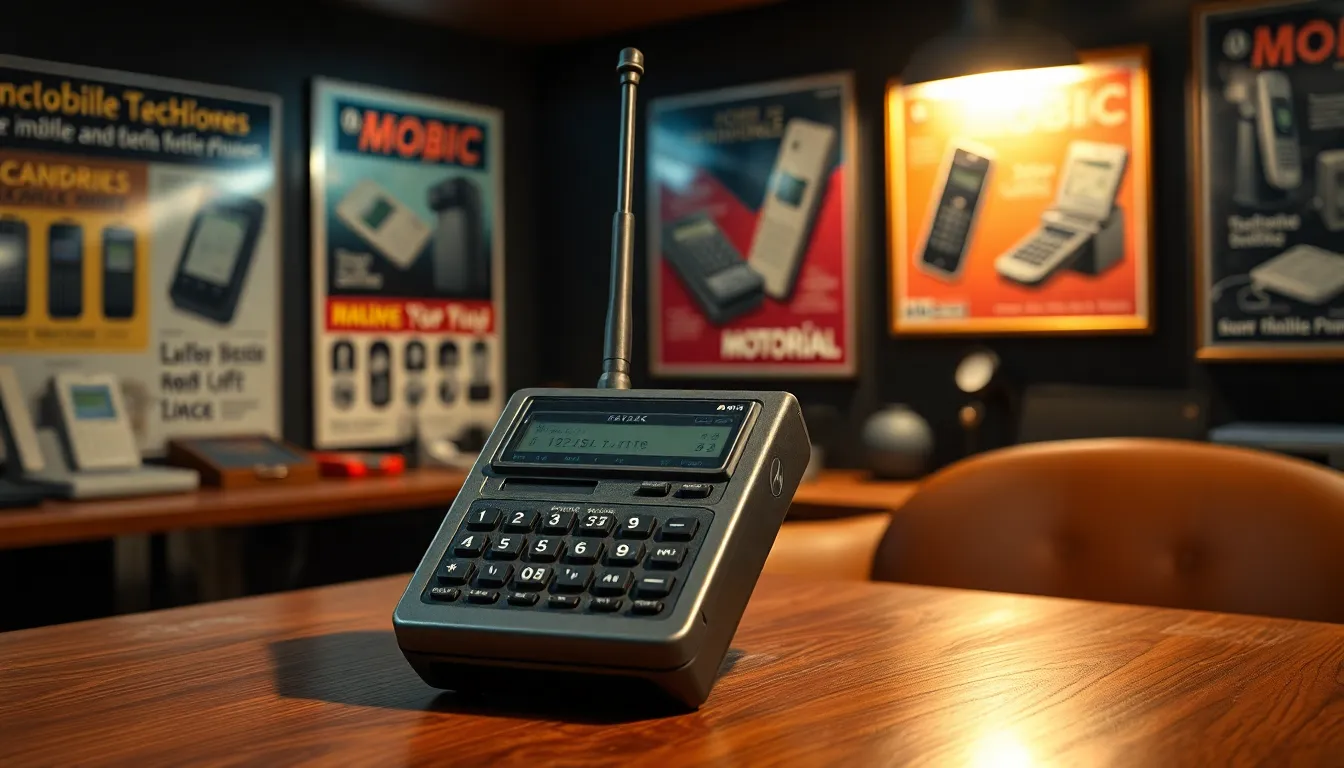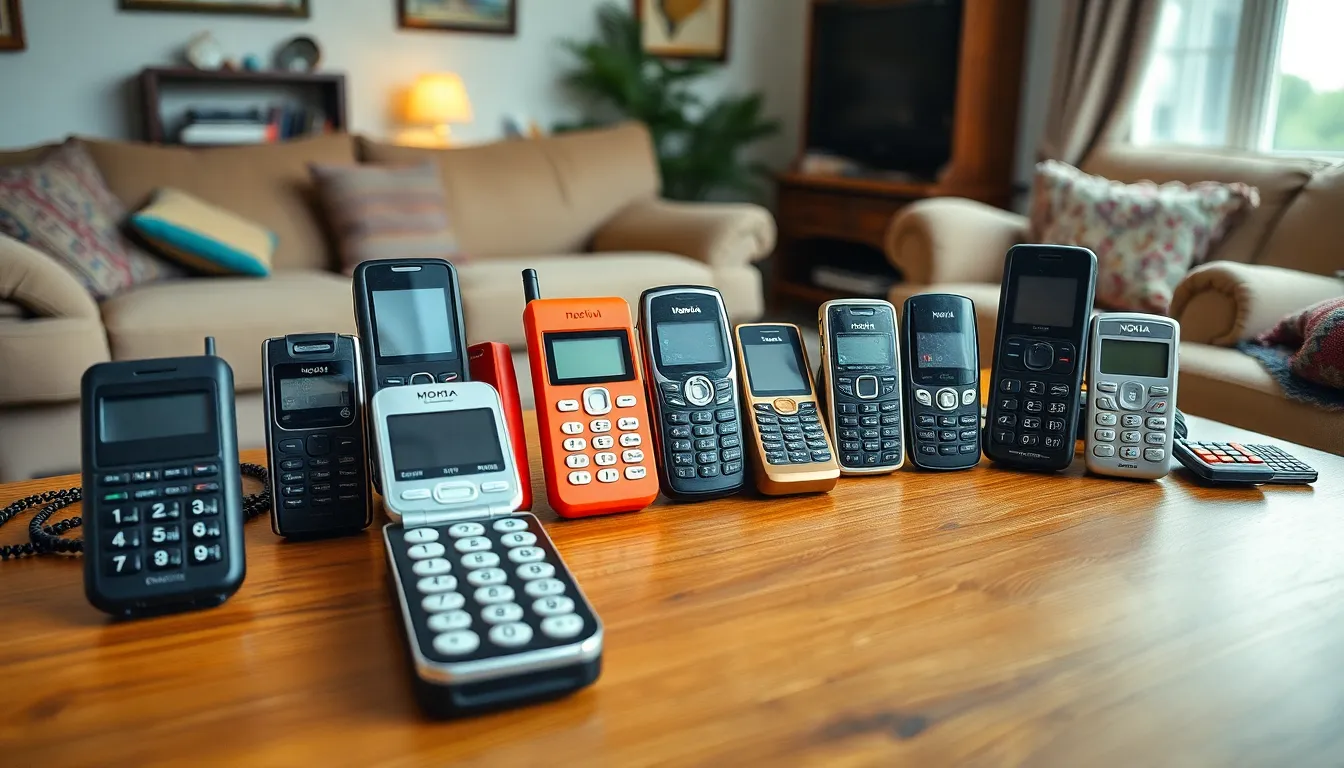Before the iPhone revolutionized the way people communicate, phones were a wild mix of quirky designs and clunky features. Remember the days when flip phones ruled the roost and texting required Olympic-level thumb dexterity? Those were the times when a phone was just a phone, and your biggest dilemma was whether to rock a Motorola Razr or a Nokia brick.
In a world where battery life lasted longer than most relationships, each call felt like a mini adventure. The pre-iPhone era was a playground of innovation, where every new model brought excitement and a dash of confusion. So buckle up as we take a humorous yet insightful stroll down memory lane, exploring the fascinating world of phones that paved the way for the smartphone revolution.
Table of Contents
ToggleThe Evolution of Mobile Phones
Mobile phones evolved significantly before the advent of the iPhone. The journey features fascinating developments in design and functionality.
Early Beginnings of Mobile Communication
In the 1970s, mobile communication took its first steps with the introduction of the first handheld mobile phone. Martin Cooper, an engineer at Motorola, made the first call on this device in 1973. Early mobile phones resembled brick-like structures, making them cumbersome and less portable. Innovations included car phones, which provided convenience for users on the go. The concept of connecting people wirelessly marked a pivotal shift in communication, laying the groundwork for future advancements.
The First Generation of Mobile Phones
By the 1980s, the first generation of mobile phones emerged in the consumer market. These analog devices allowed users to make calls without wireless infrastructure. Prominent models include the Motorola DynaTAC 8000X, known for its high cost and large size. Each phone supported only basic voice communication, lacking additional features like texting or internet access. Users experienced the beginning of the mobile revolution, and this era paved the way for further developments in mobile technology.
Key Players in the Pre-iPhone Era

The pre-iPhone era featured several influential manufacturers shaping mobile technology. Key players made significant contributions that set the stage for modern smartphones.
Motorola: The Pioneer of Mobile Technology
Motorola led the way with groundbreaking innovations. In 1973, Martin Cooper introduced the first handheld mobile phone, the Motorola DynaTAC 8000X. This phone, while bulky, represented a monumental milestone in communication. Users experienced unprecedented freedom with mobile calling, laying essential groundwork for future developments. The early 1990s saw the release of the Motorola MicroTAC, known for its compact design and flip functionality. This model further showcased Motorola’s commitment to innovation, as it offered improved portability. The legacy Motorola created during this period cemented its status as a pioneer in mobile technology.
Nokia: The Reigning Giant
Nokia emerged as a dominant force in the late 1990s and early 2000s. The Nokia 3310, released in 2000, became synonymous with durability and simplicity. Its long battery life and user-friendly interface attracted millions of users. With features like Snake, it also became a cultural phenomenon. Other models, such as the Nokia 5110, pushed the envelope by introducing graphics and ringtones, enhancing user experience. Nokia consistently prioritized reliability, which contributed to its massive market share. This period solidified Nokia’s role as a leading mobile phone manufacturer, setting high standards for future competitors.
Features That Defined Phones Before iPhone
Phones before the iPhone showcased unique features and designs that shaped mobile communication. These devices laid the groundwork for future innovations.
Design and Form Factor
Design played a vital role in the appeal of pre-iPhone mobile phones. Sleek and compact shapes defined models like the Motorola MicroTAC, which introduced a flip mechanism that enhanced portability. Users appreciated designs that emphasized functionality, such as the rugged Nokia 3310, which sported a bulky yet iconic structure. Some phones featured extendable antennas, enhancing signal reception. Colors and styles varied, with vibrant options attracting younger consumers. Overall, manufacturers focused on creating devices that were practical and visually engaging.
User Interface and Functionality
User interface elements differentiated phones before smartphones. Most devices utilized physical keypads, leading to tactile feedback that users valued. Predictive text systems like T9 emerged, simplifying texting and enhancing communication speed. Navigating menus relied on soft keys, which informed users about available functions. Additionally, early operating systems emphasized straightforward functionality, making tasks like calling and texting intuitive. While these phones lacked app ecosystems, built-in features, such as calculators and calendars, offered essential tools for daily use.
Impact of Phones Before iPhone on Modern Smartphones
Phones before the iPhone significantly shaped today’s smartphone design and functionality, influencing user expectations and technological advancements.
Transition from Basic Phones to Smart Devices
Basic phones laid the foundation for the smartphone revolution. Models like the Nokia 3310 featured simple user interfaces, which prioritized essential calling and texting functions. The introduction of innovative designs such as the Motorola MicroTAC marked a shift towards more portable devices. As users began to demand more capabilities, manufacturers responded with improved features, like color displays and enhanced battery life. Gradually, the need for internet connectivity emerged. This demand stimulated the development of smartphones that combined calling, messaging and web browsing.
Influence on Mobile App Development
Phones prior to the iPhone spurred early mobile application concepts. Devices with limited functionality initially restricted app development to basic utilities and games. Features like SMS and ringtone personalization encouraged creativity in app development. Nokia’s iconic 3310 became synonymous with popular game experiences like Snake, setting the stage for future mobile gaming. The transition from simple software highlighted the potential for more interactive experiences. As smartphones began to emerge, the demand for innovative applications surged, inspiring a new era of mobile app development that expanded far beyond original expectations.
The journey of mobile phones before the iPhone reveals a fascinating evolution in technology and design. Each device contributed to shaping user experiences and expectations in communication. From the bulky brick phones of the 1970s to the compact and durable models of the early 2000s, these innovations laid the groundwork for the smartphones we now take for granted.
Reflecting on this era highlights not just the advancements in technology but also the cultural impact these devices had on everyday life. The nostalgia surrounding these phones reminds us of a simpler time in mobile communication, paving the way for the rapid advancements that followed.




